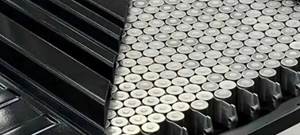Twisting in the Wind
CT editor-in-chief Jeff Sloan surveys the potential negative effects on the composites industry of the battles in the U.S. Congress over over renewal of the Production Tax Credit for renewable energy technologies — and the resulting uncertainty in the wind energy market.
The federal renewable energy production tax credit (PTC), which provides a subsidy for producers of electricity from wind energy sources, is set to expire Dec. 31, 2012. By now, you are probably aware that the U.S. Congress refused on March 15 to approve a one-year extension, and a bipartisan group promptly introduced a new bill, that same week, calling for a two-year extension. And you probably also know, based on this (and whatever transpired since) that the PTC is a political hot potato, with many Republicans calling for an end to all energy subsidies, and many Democrats calling for PTC continuation to avoid job losses. What we don’t know is where this will all end.
The PTC was born in 1992, designed to help prop up what was, at the time, a fledgling wind energy industry. Since 1992, the U.S. Congress has renewed the PTC in one-, two- and three-year increments, with the last coming in 2009. The PTC provides a $0.022/kWh credit for producers of electricity from wind energy sources. The duration of the credit is 10 years after the date the facility is placed into service.
Manufacturers of wind turbines and blades, such as Vestas, Gamesa, GE, TPI Composites and others, point to the PTC as a primary driver of wind energy development in the U.S. and want it not only extended but made permanent. Their argument is that the PTC provides a stable, business-friendly environment for wind energy development and makes wind a competitive energy source. Without the PTC, the wind energy environment will be unstable and its growth in the U.S. will slow — leading eventually to layoffs. The American Wind Energy Assn. (Washington, D.C.) says 37,000 jobs could be lost if the PTC is not renewed.
Opponents of the PTC argue that wind is not now and never will be competitive with natural gas and that not only is the subsidy a waste but Americans would save billions of dollars, as well, if wind produced no energy at all. Further, opponents argue that renewable energy sources will never provide more than a fraction of the energy required by Americans.
Whatever your politics, it is true that the PTC has stimulated wind energy growth, and this has served the composites industry well. It’s also true that the wind energy industry, sans PTC, will not wither and die. Wind energy is more cost-competitive than it used to be, and will only become more so. The problem is that the wind industry is global, and if the U.S. can’t provide a stable wind market, then China, Brazil and Germany can and will — if turbine manufacturers tire of American uncertainty, then they will pick up their toys and go play somewhere else that’s more stable.
The variable that’s most intriguing in this argument is the cost of energy. When looking at natural gas, coal, solar, hydro, nuclear and other sources, wind stacks up favorably. According to the Energy Information Admin., conventional natural gas is $66/MWh, hydro is $86/MWh, conventional coal is $95/MWh, wind is $97/MWh, advanced coal is $109 and nuclear is $114/MWh.
If you believe that it’s incumbent on us to develop multiple energy sources, it’s hard to look at the cost of wind and say that it’s unaffordable and out of reach and, therefore, not worth the investment — whether commercial or governmental.
Related Content
Plant tour: Hexagon Purus, Kassel, Germany
Fully automated, Industry 4.0 line for hydrogen pressure vessels advances efficiency and versatility in small footprint for next-gen, sustainable composites production.
Read MoreComposites end markets: Batteries and fuel cells (2024)
As the number of battery and fuel cell electric vehicles (EVs) grows, so do the opportunities for composites in battery enclosures and components for fuel cells.
Read MorePolar Technology develops innovative solutions for hydrogen storage
Conformable “Hydrogen in a Box” prototype for compressed gas storage has been tested to 350 and 700 bar, liquid hydrogen storage is being evaluated.
Read MoreAchieving composites innovation through collaboration
Stephen Heinz, vice president of R&I for Syensqo delivered an inspirational keynote at SAMPE 2024, highlighting the significant role of composite materials in emerging technologies and encouraging broader collaboration within the manufacturing community.
Read MoreRead Next
Cutting 100 pounds, certification time for the X-59 nose cone
Swift Engineering used HyperX software to remove 100 pounds from 38-foot graphite/epoxy cored nose cone for X-59 supersonic aircraft.
Read MoreCeramic matrix composites: Faster, cheaper, higher temperature
New players proliferate, increasing CMC materials and manufacturing capacity, novel processes and automation to meet demand for higher part volumes and performance.
Read MoreScaling up, optimizing the flax fiber composite camper
Greenlander’s Sherpa RV cab, which is largely constructed from flax fiber/bio-epoxy sandwich panels, nears commercial production readiness and next-generation scale-up.
Read More












